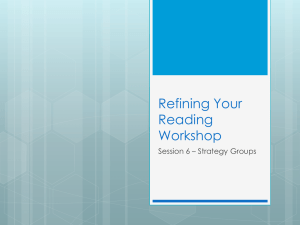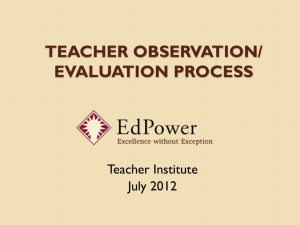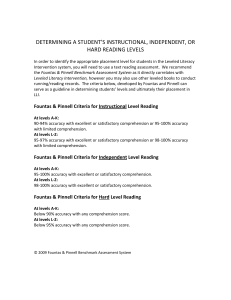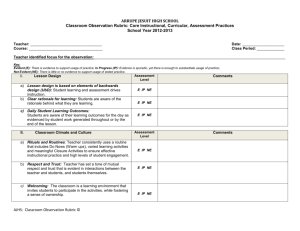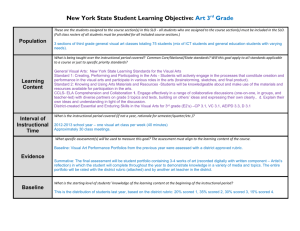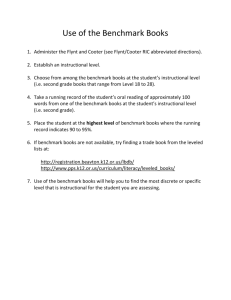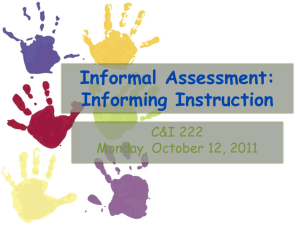Running Record Powerpoint
advertisement
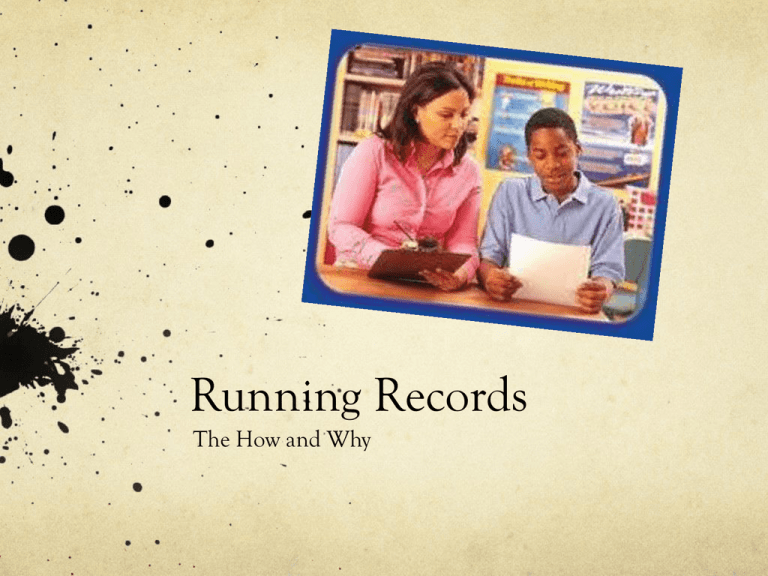
Running Records The How and Why Purpose for Running Records To determine student’s instructional levels To determine student’s placement levels for guided reading groups. To show student growth over time To select appropriate reading material for students To provide data for teachers when making critical decisions about student instruction and intervention. To provide valuable information to parents and students. Administering Running Records Always begin with a cold read (a text the student has never read before) While listening to the student read, the teacher records information about the student’s reading behaviors (using standardized coding) After completing the running record, the teacher checks for comprehension by asking within, beyond, and about the text questions, and using the F & P comprehension rubric. http://cbl.jordandistrict.org/assessments/fandp/ Check fluency using the F & P rubric http://cbl.jordandistrict.org/reading/fluency/ MONTHLY RUNNING RECORDS SHOULD MIRROR FOUNTAS AND PINNELL BENCHMARK ASSESSMENTS How often should running records be administered? Each student should have a running record administered at least one time each month Teachers should use the two-a-day format for running records Teachers should create a schedule for doing running records that insures each student receives a time to have a running record one time each month The schedule should be followed and repeated each month This should become part of the daily routine What text should we use? Running records should be administered using text from the guided reading library. Alternate using informational text and literature. It is best and highly recommended that teachers use a copy of actual text to conduct the running record. This gives teachers the best information about student’s reading behaviors. This text can be obtained through: • Making a photocopy of one section of text • Using an overlay and photocopying the overlay on the page from the book • Typing a passage of text from the book Example 1 What can we learn about the student’s reading abilities through this running record form? This form does not give us any information except an accuracy rate and reading rate. This is not enough information to determine what instructional needs the student has. Example 2 What can we learn about the student’s reading abilities through this running record form? The student has missed words that have y at the end, r controlled vowels, and the digraph /sh/ with a long vowel. We also learn that the student read for understanding when they repeated and made a self correction. We can see that the student may need more instruction to solve big words. Example 3 What can we learn about the student’s reading abilities through this running record form? In addition to the things we learned in the previous method, we get a look into the types of words the student is able to read. This text becomes meaningful when we are choosing text for the student to read, planning intervention if necessary, and discussing student needs with parents. Now What? We have gathered data about the student’s accuracy, fluency/rate, comprehension, and the level of text the student can read. How do we determine the student’s instructional level? “If you have recorded an easy, or independent level text for the reader, then continue the assessment with increasingly more difficult books (higher levels). You want to find the benchmark instructional level.” Fountas & Pinnell; Benchmark 1 Assessment Guide, Heinemann (2008). Guided Reading Rubric Use the guided reading rubric to help make decisions regarding student’s instructional levels. Base decisions on multiple pieces of evidence such as classroom observation, anecdotal notes, and running records. http://cbl.jordandistrict.org/reading/guided/

